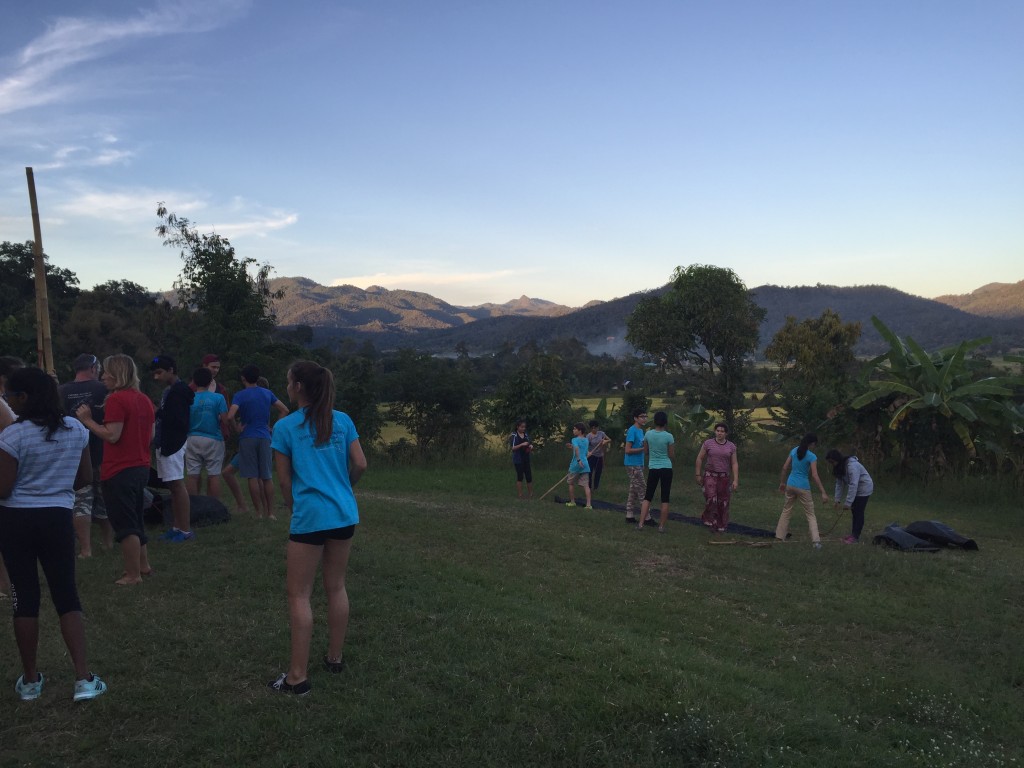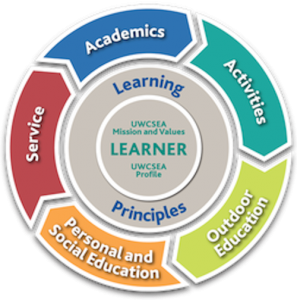I’m sitting near a smouldering fire leftover from the night before. Behind me the Mae Teng River unwinds like a dropped spool of yarn, slowly passing Pok Koh Lam- a small Karen hill tribe village in northern Thailand. I’m talking to Jen about crippled butterflies, teaching and learning, the power of letting go and trusting kids. We are waiting for the group of students that we have both been teaching for the last few days, to show us that they have indeed learned the lessons we’ve been teaching them all week.
“You’ve never heard the story of the cripple butterfly?” She asks as I poke the ashes with my foot, hoping the red ember might catch alight and stop smoking. The morning is brisk and I am ready for the day of rafting that lays ahead. I shake my head no and look forward to listen to what she is about to tell me. I am hoping the tale will match the philosophy we both share when it comes to teaching kids how to be independent.
Well, there was this young boy who really loved being outside and alone. He would playing in the creek and the woods and gather the flora and fauna and keep meticulous track of it in his home. He was a young scientist of sorts. One day this boy found a cocoon of a butterfly, and the next day a small opening appeared. He sat and watched the butterfly for several hours as it struggled to force its body through that little hole. Then it seemed to stop making any progress. It appeared as if it had gotten as far as it could, and it could go no further.
So the boy decided to help the butterfly. He took a pair of scissors and snipped off the remaining bit of the cocoon.The butterfly then emerged easily. But it had a swollen body and small, shriveled wings.
The boy continued to watch the butterfly because he expected that, at any moment, the wings would enlarge and expand to be able to support the body, which would contract in time. Neither happened! In fact, the butterfly spent the rest of its life crawling around with a swollen body and shriveled wings. It never was able to fly.
The boy asked his dad what had gone wrong and the father told him in his kindness and haste, the boy did not understand was that the restricting cocoon and the struggle required for the butterfly to get through the tiny opening were a way of forcing fluid from the body of the butterfly into its wings so that it would be ready for flight once it achieved its freedom from the cocoon.
Jen finishes her story and the kids start to make their way down to the rafts and soon we are on our way down the rapids, but this story which I have upon some research learned is a Muslim fable, stayed with me.
It has had me thinking, not only about outdoor and adventure experiences, but it also about parent my own kids and how I teach the students in my classes everyday.
How often do we let our students make their own way from their cocoons?
How often do we give-in to the urge to cut them free?
Let me share another story from the last week I spent in Chiang Mai on our school’s annual grade 8 advent trip to Chiang Mai Thailand, where our kids among other things: trek, cave, river raft, set up their own shelters and cook their own food. They start the week as helpless children and with some coaching, teaching and scaffolding, the idea is that by week’s end they are self-sufficient.
Pok Koh Lam is a test of sorts. It’s the night where the students are left to their own devices to set up camp, cook food, clean up and go to sleep. Only to wake up the next day, with a letter of instructions telling them to be down at camp ready to go the next morning.
My story began, with Jen and I, waiting to see if our butterflies would make down to camp without us cutting the cocoon, because we both share the philosophy that for kids to learn teachers must resist the urge to constantly step in.
In outdoor this urge to fix and help is pretty obvious. You observe a group of students arguing about how to scramble eggs, you being an adult and knowing how to scramble eggs, walk over and show them how to do it. It feels good. You are a teacher and this is teaching. Right?
But what if you had already shown them how to scramble eggs a few days ago, and now you just wait to see how they might resolve the issue on their own? This is what it means to resist teaching, when what you really want is for kids to learn.
 Sure the eggs might turn out badly, and yes a terrible fight might break out, the list of things that could go wrong are limitless, but what if you weren’t there at all and left the kids to sort it out on their own?
Sure the eggs might turn out badly, and yes a terrible fight might break out, the list of things that could go wrong are limitless, but what if you weren’t there at all and left the kids to sort it out on their own?
Time and time again on these trips, under Jen’s tutelage I have learned that letting go and trusting that the kids will work it out, through the process of being left alone, is when they they will do their best learning. Three years running on this trip and working with Jen, and I am amazed at the growth of my kids show at the end of the week. When we set the challenge and give enough support and scaffolding when they need it most, usually at the start, the kids step up to the challenge and break free of their own cocoons and are able to fly in the end.
Where else can we apply this philosophy?
I’m going to mix my metaphors , so please stay with me. Sometimes, usually, there is a bit more nuance between helicopter teaching and a no-hands on approach, especially with middle school learners. Kids between the ages of eleven and fourteen need a sort of manual clutch system of teaching and learning.
Think about driving a manual transmission car- there is a sweet spot between pushing the gas and lifting the clutch. A moment when the car is engaged and ready to move forward and the gas allows it to accelerate.
Middle school learners need this level of support and teaching. If left on their own too many times when success is not possible, they will lose motivation and will not be able to free themselves from the cocoon. If, however, they are given too much teaching, hovered over and not allowed to fail they will expect a teacher to always be there and never be able to fly on their own. They will not learn.
The secret is knowing how and when to administer just the right amount of teaching and when to lay-off and allow them to accelerate. (Fly? now I am getting confused)
In the jungle, I wanted to jump-in every chance I had, but Jen would remind me to trust the kids and our own teaching and to leave them alone. “Let me go see how the cooking is going, let me give them some advice on the bivy, let me, let me….” What I wanted to say was- let me do it for them to make sure it is done right. But doing it for them is not teaching.
Now that I am back from the trip, I am left asking myself how often am I over teaching and getting in the way of the learning? How well am I driving this car?
I am grateful that the workshop model meshes well with the cocoon philosophy- teach the kids early and a lot. Then later confer and see how they are doing and customize your teaching to their specific needs. But even in conferences, so many times when a student is silent or thinking or unsure, I just want to jump in and teach them rather than let them take their time to learn by doing it themselves.
Not sure if this post had a point, but it has been on my mind since the trip and I would love to hear your thoughts? What have been your successes with letting go and trusting kids? What have been the disasters from this method? Or have you had success proactively teaching and guiding students to success?
Please share your your thoughts and stories in the comments below.


